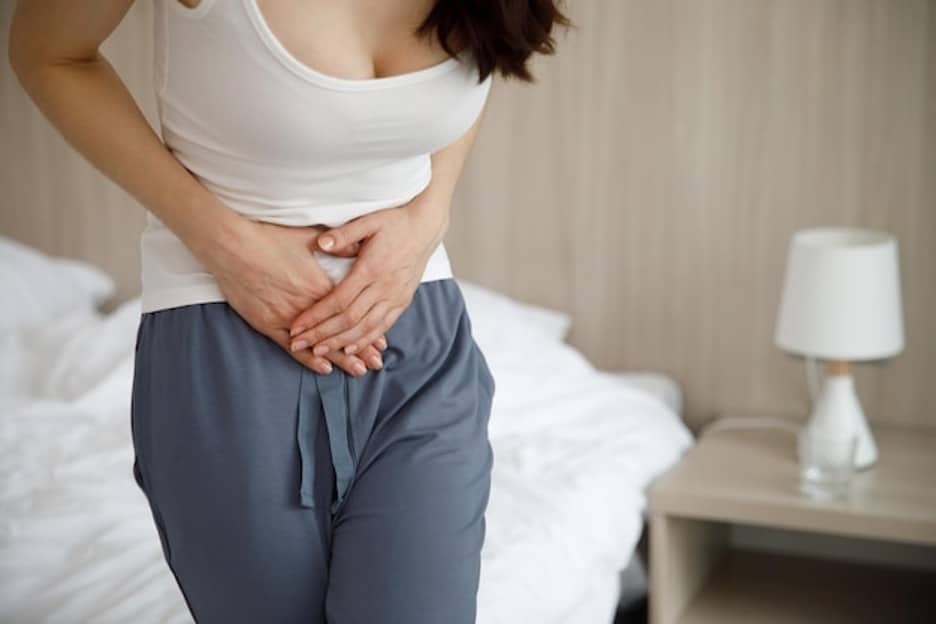COMBAT MENSTRUAL INFECTIONS
– Especially During Rainy Periods

For most women, periods are problematic enough with irritable feelings, spotty skin, greasy hair, mood swings, bloating, cramps, and premenstrual syndrome (PMS) symptoms. But the uneasiness associated with those symptoms is nothing compared to menstrual infections.
Vaginal candidiasis, also known as vaginal yeast infections, could occur before or after your period. When the levels of bacteria and yeast present naturally in the vagina become unbalanced, there is a high risk of vaginal yeast infection. Hypertrophy of fungus can also cause vaginal yeast infection.
Not attending to personal hygiene effectively especially during the rainy season can expose one to a lot of bacterial, fungal, and viral diseases. Therefore, it is essential to keep yourself safe by preventing vaginal infections. You may likely spend the rainy season in so much discomfort and pain if care is not taken.
Yeast infection or Urinary Tract Infection (UTI)?
Before we look at the effective ways to fight yeast infections, let’s look at the symptoms, causes, and types of these infections.

A healthy vagina contains yeast cells and bacteria, but an imbalance of the yeast and bacteria can cause the yeast cells to multiply, which causes itching, irritation, and swelling leading to menstrual infections.
Symptoms of yeast infection:
Vaginal yeast infections have a mutual set of symptoms, which include:
- Burning sensation during sex or urination
- Swelling around the vagina
- Vaginal itching
- Redness
- Vaginal Rash
- Vaginal Soreness
- Clumpy and whitish-yellow vaginal discharge may look like cottage cheese, as described by some women who have had related experience. The discharge may sometimes be watery.

Causes of vaginal yeast infections
Certain factors can increase your probability of getting vaginal yeast infections. Some of those include:
- The use of antibiotics, birth control pills (contraceptives), or certain steroids- Antibiotics kill bacteria which can interrupt the delicate balance of bacteria and yeast in your vagina. This gradually allows the candida fungus to multiply, leading to symptoms such as burning pain during urination and sex and itching.
- Pregnancy- Estrogen increase in your body during pregnancy can cause instability to the normal balance of bacteria and yeast in your vagina. This may lead to yeast overgrowth. Most yeast infections during your pregnancy can result from the fungus candida Albicans. Two other kinds of yeast can also cause yeast infections; candida glabrata and candida tropicalis.
- Weak immune system- Women with lowered immunity from HIV infection, corticosteroid therapy, and inflammatory bowel disease are most likely to get infections.
- Uncontrolled diabetes- Diabetes patients are more prone to yeast infections because of their high sugar, and sugar helps candida growth. High sugar levels in your blood are directly proportional to high sugar levels in your saliva, sweat, and urine, which encourages yeast to grow in areas like your genitals and mouth.
- Sitting in a wet bathing suit- Wearing a wet bathing suit leaves a residue pool of chemicals on your skin and enhances the imbalance of bacteria and yeast in the vulva.
- Not changing out of your sweaty clothes- This can also cause a pool of chemicals on your skin to alter the balance of yeast and bacteria, causing infections.
- Use of scented vaginal deodorants or tampons- Same way, deodorants can cause an underarm rash, yeast or fungal infection can also be gotten from vaginal deodorants. This is caused by contact dermatitis from the ingredients in the deodorants.
Urinary Tract Infections
The urinary tract makes and stores urine which is one of the liquid waste products produced in the body. The urinary tract constitutes the urethra, ureter, bladder, and kidney.
Urinary tract infections can also be called bladder infections, usually in the urethra, bladder, ureter, and kidney.

Symptoms of Urinary Tract Infections
The symptoms of UTI may include:
- An intense, frequent urge to urinate, even though most times little or nothing comes out when you do.
- A burning sensation during urination
- Pressure and pain in your lower abdomen or back
- When the infection may have reached your kidney, fever or chills can be frequent.
Types of Urinary Tract Infections (UTI)
When infected, each of the compositions of your urinary tract is given different names based on where the infection is.
- Pyelonephritis (kidneys)- This can result in fever, nausea, chills, pain in your back, side, and vomiting.
- Urethritis (urethra)- This causes discharge and a burning sensation when you urinate.
- Cystitis (bladder)- You might feel like urinating a lot, and it hurts when you do. You might also experience bloody urine and pain in the lower abdomen.
Causes of Urinary Tract Infections
- Diabetes
- Weekend immune system
- Genes- The shale of your urinary tracts can make you more likely to be infected
- E-coli- This bacterium is normally found in the intestines.
Five Effective Ways To Combat Menstrual Infections – Especially during rainy periods
To help you prevent menstrual infections, it is best to know what factors support or contribute to it in the first place. This is why we earlier discussed the causes and symptoms of these infections.
Research shows that 75 percent of women may get at least a yeast infection during their lifetime. And some will get more than one infection. This means preventing yeast infections in all women may not be possible. Found below are five things you can do to minimize your chances of getting a yeast infection.
1. Do Not Douche:
Douching is the washing or irrigation of the vagina. It occurs when a current of water or vapor is directed at the vagina. Douching will interrupt the level of bacteria and yeast in your vagina. It destroys the bacteria that are meant to be there to fight against infections.
Some feminine hygiene products with scents, including sprays, bubble baths, and soaps, should not have direct contact with the vagina as they tamper with the bacteria in the vagina, destroying them and leaving the vagina prone to infections.
2. Avoid Wet Clothings:
Sitting in a wet gym outfit after a workout or in your wet bathing suit after swimming or having a shower introduces chemicals into your skin since your wet gym clothes or bathing suit sticks to your body and does not give way for any form of breathability between the vaginal opening and your cloth. These chemicals destroy the good bacteria in the vagina, which sets you up for a yeast infection.
3. Wipe or clean from your vagina to your anus (from front to back):
Wiping from front to back is essential because it lowers the number of bacteria being sent from your anus into your vagina (urethra). Even after proper cleaning, there is still a chance of bacterial contamination. This contamination will most likely result in urinary tract infections.
4. Wear breathable underwear (keep things loose):
The best material for underwear is cotton. This is because it does not hold on to heat or moisture and keeps you dry. Underwears made from cotton are breathable and absorbent, which can help against yeast infections. It is normal and healthy to have a vaginal discharge similar to the moisture in your mouth- so you will like your underwear to absorb extra moisture gently.
During the rainy seasons, the moisture in the weather affects our clothing as much as it affects our surroundings and environment, so it is advised that you keep your underwear dry at all times. Most people tend to sweat a lot during the monsoon season, regular change of clothes will reduce the risk of having a yeast infection.
Always ensure your skirts, jeans, yoga wears, underwear, tights, and pantyhose are not too cozy, as this can raise your body temperature and increase moisture around your vagina. This increases your risk of getting a yeast infection. Clothing (especially underwear) that is very tight and made up of materials like nylon and synthetic trap heat and moisture and might make you more likely prone to yeast infections.
5. Change your pads, panty liners, and tampons, often when on your period:
Trapped moisture provides a breeding place for fungus and bacteria; also, wearing a pad or tampon for too long may lead to an infection, such as a yeast infection. Damp pads and tampons can cause irritation or pad rash, most dreaded due to friction. This can make you susceptible to yeast infection. Pads should not be worn for more than 6 hours and 4 hours when the flow is heavy. Keeping damp pads and tampons will cause irritation and infection.
Conclusion
People who have diabetes have an increased risk of yeast infection. This is because both type 1 and type 2 diabetes cause high blood sugar levels, which encourages yeast growth. To reduce the risk of getting infected, people who have diabetes are required to control their blood sugar levels in the following ways:
- Regularly monitoring their sugar levels
- Making dietary programs and changes
- Taking diabetes medication such as insulin
It is necessary to maintain a healthy weight as someone who is obese or overweight has larger folds of skin that trap moisture and heat. And in these rainy periods, yeast thrives. Being overweight also maximizes your risk of diabetes, a condition that makes you more susceptible to yeast infections.





